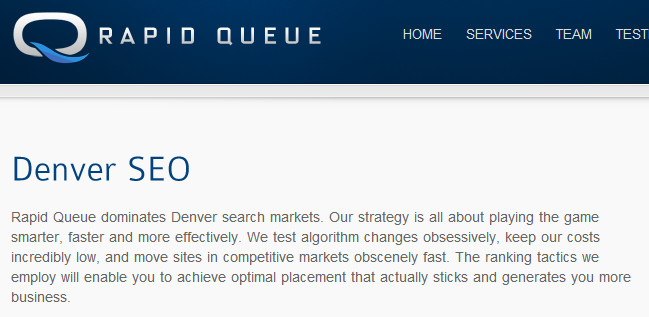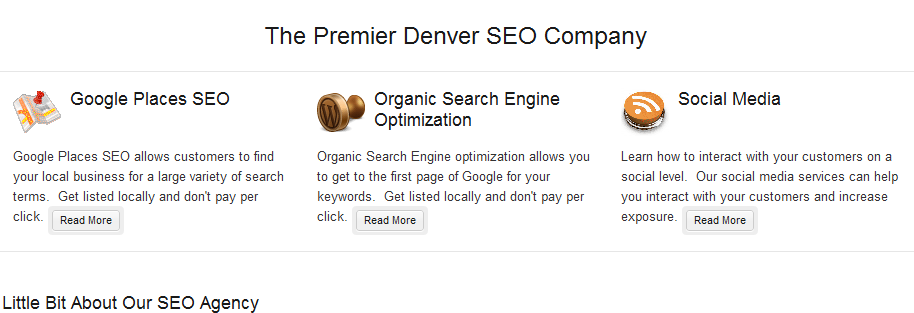Optimize for Robots, Write For Humans
One of the big conceptual issues that we run into a lot with folks, who are new to SEO, is conveying to them the importance of optimizing their site for Google’s robots but writing their content for humans. This is particularly the case when discussing the primary on-page content optimization factors: Titles, H1′s, Meta Descriptions, URL structure, and body content.
If you want to optimize a page for specific keywords, there will naturally be some sacrifices that must be made as far as your content is concerned. However, those sacrifices do not have to be major, and optimizing a page doesn’t mean that your content has to be garbage. I want to go through some examples of content that is well optimized and still written for humans, just to give you an idea of how achieving both is possible. Here we go!
Titles for Robots vs. Titles for Humans
The line we are walking here is between being able to fit in the keywords we are targeting, but also being intelligible for a human reader. Here is an example of page title. You tell me who this was written for:

This site is not ranked in the top 100 for “ghostwriter” on Google.
Does the reader know what kind of website this is? Yes. The relevance is effectively communicated. But this title is clearly written with one purpose; to rank for as many variants of “ghostwriter” as possible. Search engines don’t need to see this kind of content to determine relevance, and I personally would not be very inclined to click on that listing. Let’s try this instead:

This site is ranked number 8 for “ghostwriter” on Google.
Much better, even though it does exceed the 70 character best practice limit. The author of this page has managed to get her keywords into the page title, all while writing content for a human. Plus, they are probably ranking for a wider variety of phrases because the language they use is more diverse and descriptive.
Descriptions
I don’t think I need to narrate this one:

This site is ranked number 17 for “colorado springs roofer” on Google.
Yikes! This description was clearly written for a robot. As a human, when I see “roofer” I get the point. I don’t need to see every variant of the word. This one is far more informative, all while conveying the same relevance:

This site is ranked number 3 for “colorado springs roofer” on Google.
H1’s
This is perhaps the biggest content optimization blunder to avoid, as the way you form your H1′s directly affects the way people are reading your content. Here is an example of poor use of the H1, clearly meant to speak to a robot, not a human:

This site is ranked number 6 for “Denver SEO” on Google.
This H1 is nothing but a keyword, and if the user landed on that site by searching that keyword, it’s time to give them some new information! (Don’t worry, our competitor won’t mind that we called out their bad H1. No good SEO is ever mad about a free editorial link!)
Here is an example of a good H1, which accomplishes the same keyword goal:

This site is ranked number 4 for “Denver SEO” on Google.
Page Content
Well since I just gave my own company’s site a pat on the back, all while ripping a competitor; I might as well go in the other direction. Here is one if the first pages of content I ever published online. As you can see, I managed to stuff the keyword “Denver SEO” in there about 8 times (twice as much as best practice dictates). There was one other thing I messed-up; we want our home page to rank for Denver SEO, not some random blog post! So, instead of taking this page down (we had already built some links to it) I just decided to leave it up as a reminder of how far my content has come!
Hopefully these examples have shown that you don’t have to write your content for a robot in order to be properly optimized for your target keywords. Write for humans, while keeping your target keywords in mind, and not only will your rankings most likely be better than the alternative, humans will actually like your content!